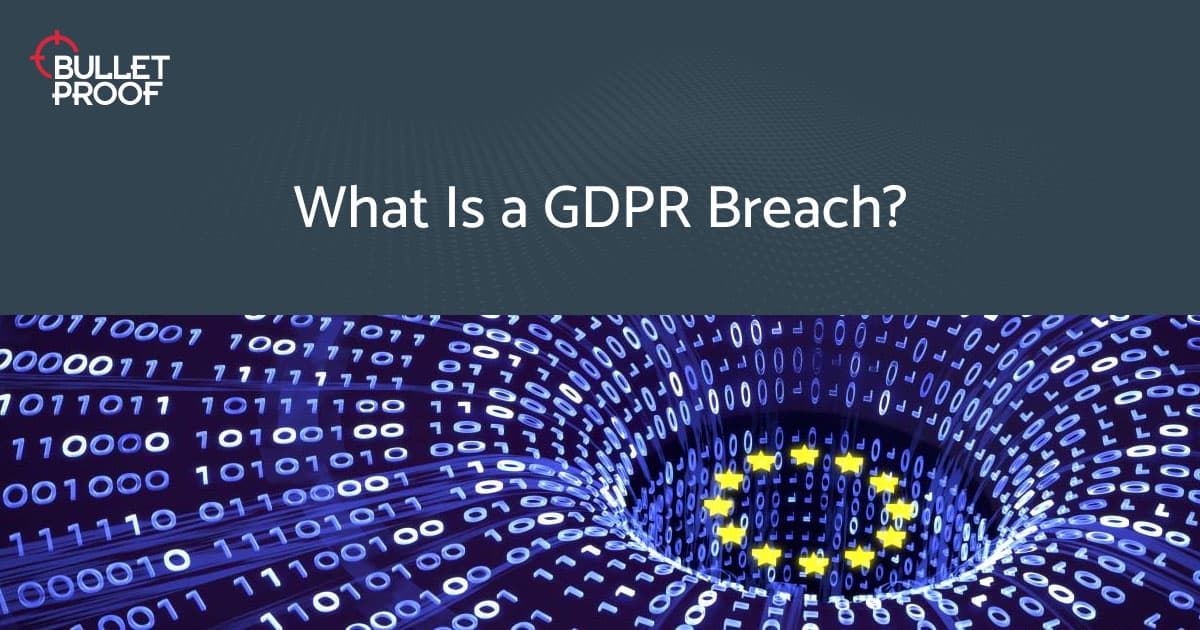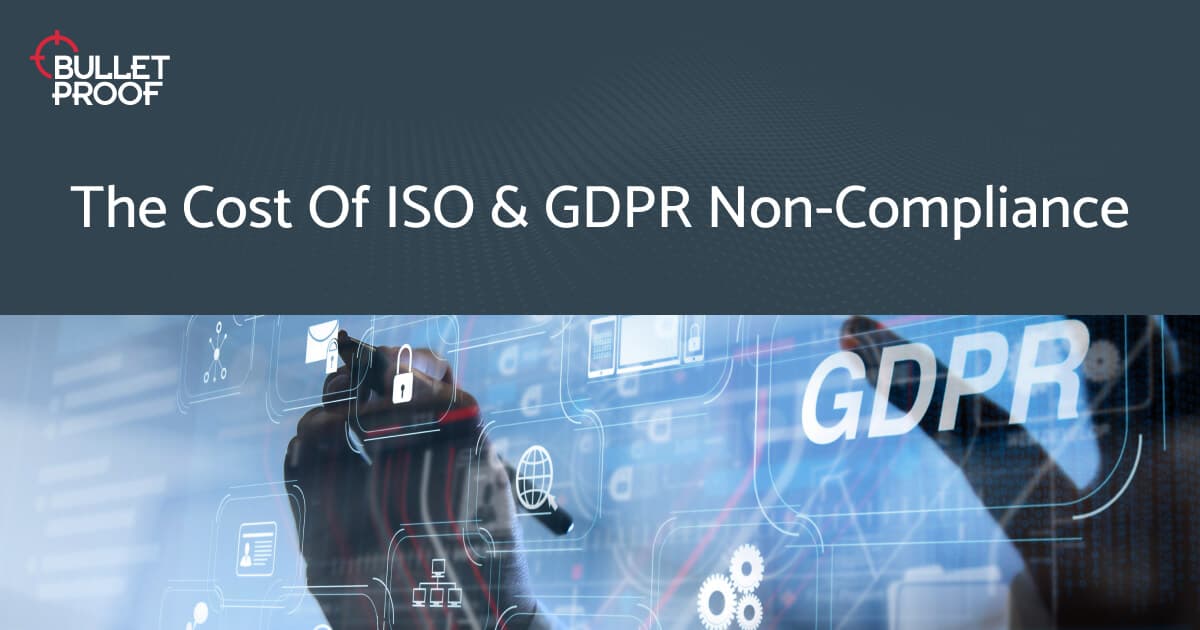How to Report a GDPR Data Breach
What is a data breach?
In order to understand how to report a data breach, we first have to know what a data breach actually is. Under the GDPR, a personal data breach is “the accidental or unlawful destruction, loss, alteration, unauthorised disclosure of, or access to, personal data.” This covers a wide range of scenarios, some of which might be surprising. The following would all be considered as data breaches under the GDPR:
CCing rather than BCCing contacts on an email
Writing a customer’s details on a post-it note and leaving it on your desk (where unauthorised personnel see it)
Forgetting to update someone’s address details (especially if a product was then sent with someone’s else name to the wrong address)
A rogue employee deliberately deleting someone’s record
Lastly, of course, there’s the classic example of a data breach: that of having your systems hacked and your data stolen (and potentially also sold) by hackers. In these cases, personal data has either landed in the hands of someone it shouldn’t, or it’s been changed or deleted without authorisation. Thankfully, not all of these examples would need to be reported to the Information Commissioner’s Office (ICO), and fewer still would lead to ICO action and fines.
When to report a breach to the ICO?
The easy answer is: if you think there’s been a data breach, no matter how small, speak to your Data Protection Officer (DPO). Your DPO will be experienced in judging the severity and likelihood of potential negative consequences to the data subjects, which determines if the data breach needs to be reported. The worse the impact on the rights and freedom of individuals, the worse your data breach will be regarded. More companies are choosing to take an outsourced DPO service, as it gives expert-level data protection advice on an affordable monthly retainer. So long as employees have relevant training on the basics of the GDPR so they can spot data breaches, let your DPO take care of it – after all, it’s their job.
How to identify a reportable breach
If you’re handling data protection matters in-house, it is imperative to assess every breach on a case by case basis to identify if the breach needs to be reported. The ICO has a free self-assessment tool to help you determine the scope of your data breach and if you should report it.
In cases when a breach doesn’t need to be reported, such as the example of writing a customer’s details on a post-it note and leaving it on your desk, simply adding the incident to your breach register and conducting a ‘lessons learnt’ exercise should be enough.
“The best thing you can do is to have a data breach procedure in place – and make sure it’s been tested. Ensuring that it includes a simple data breach matrix will greatly help in assessing the severity of a breach. It’s much quicker and easier to get this in place before you have a significant data breach.”
Rebecca
Strict time limits
Article 33 of the GDPR states that in the event of a personal data breach, data controllers should notify the appropriate supervisory authority without undue delay and, where feasible, not later than 72 hours. That’s 72 hours after becoming aware of the breach and not after containing it. As soon as you’re aware of the breach, the clock starts ticking. Whilst 72 hours is more than the PECR, it’s still not a lot of time – especially for those businesses who aren’t prepared.
If you can’t give the ICO all the information they require within 72 hours, you must explain the delay and tell them when you’ll be providing the rest of the information. The list of information the ICO requires is comprehensive, which is why it helps to have an experienced data protection officer on hand.
Case Study – Late Notification GDPR Fine
Back in 2019, Booking.com was hit with an eye-watering fine of €475,000 for the late reporting of a data breach. Though Booking.com became aware of the breach on 13th January, they didn’t report the incident until 7th February. That’s 22 days, instead of the mandated 72 hours.
Lessons Learned
Booking.com could’ve avoided the situation by ensuring that their employees had regular GDPR training to make them aware of -
How to detect a data breach
Who, how and when to report breaches to the right person/department within an organisation
How to access and follow the data breach procedure
Top tips on reporting a breach
Before
Review your data breach procedure before you have to use it! Test it with a mock data breach. No procedure can truly be called fit for purpose until it’s been tested.
Give your whole employee base simple GDPR training. It’s affordable and flexible, with covid-safe delivery options.
During
In the event of a suspected breach, identify if there has been any impact to the confidentiality, integrity and/or availability of personal data.
Assess if risks include any form of emotional and physical distress, loss of reputation or financial loss.
Keep your DPO in the loop with all suspected data breaches, no matter how minor.
After
Though you might be busy with the initial fall-out of a data breach, don’t forget the 72-hour time limit starts from the moment you become aware of the breach.
As soon as you’re aware of the breach, the clock starts ticking
Making data breaches less likely
Full GDPR compliance includes knowing how to handle a data breach, so if you’re reading this thinking “I’m not sure we’ve got a tested breach procedure”, then you’re probably not GDPR compliant. The first step would be to book a GDPR gap assessment , or talk to one of our experienced data protection officers for some helpful advice.
Having a strong cyber security posture can drastically reduce the worst kind of data breaches – those caused by hackers. The best place to start here is to book a penetration test to uncover your security vulnerabilities, and work towards Cyber Essentials certification. For organisations who are a bit further along their security journey, there’s ISO 27001 compliance and our next-generation managed SIEM service – managed SIEM.

Get help with your data protection obligations
Bulletproof’s experienced data protection officers give your business on-going support and maintenance of your data protection obligations. Find out more about our flexible, cost-effective packages.
Learn moreRelated resources
Get a quote today
If you are interested in our services, get a free, no obligation quote today by filling out the form below.













